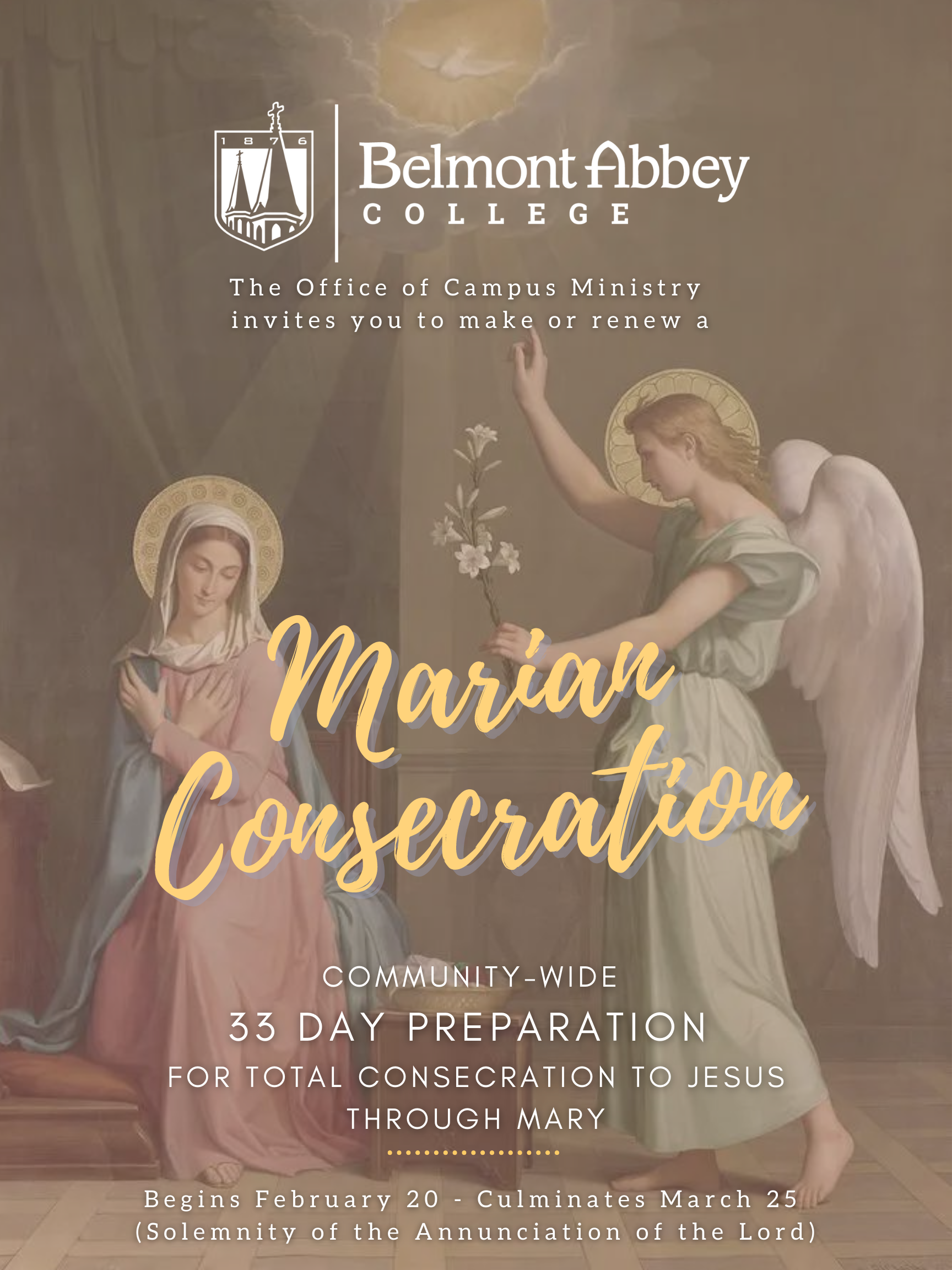When Father Herman Wolfe first came from St. Vincent Abbey to North Carolina in 1876, as the first monk to start the monastery here, he decided to name the priory “Mariastein”, in honor of the Blessed Virgin Mary and a large granite boulder that dominated the property (this boulder is now in the Basilica narthex, having been converted into a baptismal font). Thus the monastery and property from the beginning were dedicated to the Blessed Virgin Mary. Then, when Abbot Boniface Wimmer of St. Vincent Abbey visited the following year in 1877, he changed the name of the priory while continuing the dedication to the Blessed Virgin Mary. The monastery would be the Benedictine Priory of Mary Help of Christians (and later the Benedictine Abbey of Mary Help of Christians), and the school would be called St. Mary’s College.
In the Basilica, the statue of Mary, Help of Christians, now stands on a pedestal atop the back wall. This statue had formerly stood in the original frame chapel, and was moved into the new church in 1893. The title “Mary, Help of Christians” was first used in the year 345 by St. John Chrysostom, but it became popular after the Virgin Mary’s assistance was invoked by Pope Pius V during the struggle with Islam in the sixteenth century that culminated in the Christian victory at Lepanto in 1571. The pope asked all Christians to pray to Mary, the help of Christians. The statue is a traditional representation of Our Lady, presenting the divine child as the “help” of the world.
One of the early acts of Abbot Leo Haid, the first abbot, was to petition the local residents to change the name of the town. They agreed, and the town’s name was changed from Garibaldi to Belmont in 1886. Then in 1913, Abbot Bishop Leo Haid announced that the name of the College would be changed officially to Belmont Abbey College. The name also gave the College a clear association with the popular – though never official – name of the monastery, “Belmont Abbey”. Of course, in making the change for the school, the Abbot was careful to specify that the Mother of God, as Help of Christians, would continue to be recognized as the principal patron of the College, monastery, and church.
Another strong indication of the Abbey’s dedication to Mary is the Lourdes Grotto. In June of 1890, Father Francis Meyer, a young priest of the abbey, contracted typhoid fever. As the disease lingered into its second month, Haid wrote, “I am afraid he will die although we have prayed and still pray for his recovery”. Father Felix Hintemeyer, who had organized these prayers, appended to the pious petitions the promise that should Father Francis be cured, the monks would build a grotto in honor of the Virgin, whose apparition before Saint Bernadette Soubirous at Lourdes in 1858, had sparked great interest and devotion throughout the Catholic world. Meyer recovered, and Father Felix set the brothers to hauling granite boulders to construct the Grotto. The Lourdes Grotto was blessed as a pilgrimage shrine on May 7, 1891, above all else, for the intention of increasing priestly vocations.
– Excerpts from My Lord of Belmont (Fr. Paschal Baumstein) and Simon Donoghue’s Basilica tour
In recognition of this patronage, the office of campus ministry invites the students, faculty, and staff of Belmont Abbey College to make or renew a personal consecration to the Blessed Virgin Mary. The resources provided offer a tried and true manner of preparation for such a consecration beginning on February 20th and culminating on March 25th, the feast of the Annunciation.

Give your spiritual life a lift
I was able to grow deeper in my faith and fall in love with God all over again. I was challenged by my peers, professors, and the monks to take advantage of every opportunity that I had at the Abbey, including daily mass, confession, and a beautiful adoration chapel outside my door.
JESSICA JASSO 2014
Accounting

